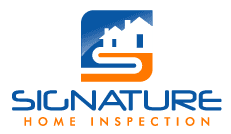When it comes to insuring your property, insurance companies may require a 4-point inspection. This specialized inspection focuses on four critical components of a home – electrical, plumbing, HVAC, and roofing. In this blog post, we’ll explore everything you need to know about 4-Point Inspections for Insurance. The details of a 4-point inspection, why insurance companies request it, and its importance for homeowners. Let’s get started!

Everything You Need to Know About 4-Point Inspections for Insurance
Electrical System
During a 4-point inspection, the electrical system is thoroughly examined to identify potential hazards or outdated components. The inspector will assess the electrical service panel, wiring, and other visible elements. They look for proper installation of faulty wiring, obsolete materials, or potential safety risks. By scrutinizing these aspects, insurance companies ensure that the property is not susceptible to electrical disasters like fire or electrical shock.
Plumbing System
The plumbing system inspection focuses on water supply lines, drain lines, and fixtures. Leaks, outdated plumbing materials, and signs of water damage are carefully examined. Through this inspection, insurance companies want to ensure that the property’s plumbing is in good working condition – no leaks, no outdated pipes, and no hidden issues that could lead to significant water damage.
HVAC System
The heating, ventilation, and air conditioning system (HVAC) inspection aims to evaluate these systems’ condition, age, and functionality. The inspector checks the heating and cooling units, ventilation, and ductwork for possible problems. Insurance companies are interested in determining if the HVAC system is running efficiently and poses no significant risks of malfunction, which could result in expensive repairs or replacement.
Roofing
A thorough examination of the roof is crucial during a 4-point inspection. The inspector inspects the roof’s age, condition, and overall integrity. Signs of damage, leaks, or wear and tear are noted. Insurance companies need this information to assess the risk of potential claims related to roof problems. An old or damaged roof can lead to considerable damage caused by storms or water penetration, making it a pivotal component to evaluate during the inspection.
Conclusion
A 4-point inspection is a specialized inspection demanded by insurance companies to assess the insurability of a property. By inspecting the electrical system, plumbing, HVAC, and roofing, insurers aim to identify potential risks and liabilities associated with these components. The results help them determine appropriate coverage and premiums for older homes or those with outdated systems. If you plan to insure your property, expect a 4-point inspection as part of the insurance process.
Remember, a properly conducted 4-point inspection ensures that your property is adequately protected and avoids potential issues in the future, giving you peace of mind.


